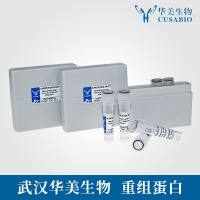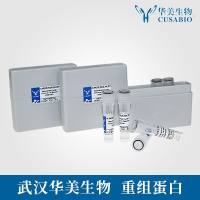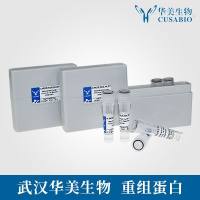Disulfide Conjugation of Peptides to Oligonucleotides and Their Analogs
互联网
- Abstract
- Table of Contents
- Materials
- Figures
- Literature Cited
Abstract
Peptide conjugation of oligonucleotides and their analogs is being studied widely towards improving the delivery of oligonucleotides into cells. Amongst the many possible routes of conjugation, the disulfide linkage has proved to be the most popular. This reversible linkage may have advantages for cell delivery, since it is likely to be cleaved within cells, thus releasing the oligonucleotide cargo. It is straightforward to introduce thiol functionalities into both oligonucleotide and peptide components suitable for disulfide conjugation. However, severe difficulties have been encountered in carrying out conjugations between highly cationic peptides and negatively charged oligonucleotides because of aggregation and precipitation. Presented here are reliable protocols for disulfide conjugation that have been verified for both cationic and hydrophobic peptides as well as oligonucleotides containing deoxyribonucleosides, ribonucleosides, 2??O ?methylribonucleosides, locked nucleic acid (LNA) units, as well as phosphorothioate backbones. Also presented are reliable protocols for disulfide conjugation of peptide nucleic acids (PNAs) with peptides.
Keywords: conjugation; disulfide oligonucleotide; peptide; PNA
Table of Contents
- Strategic Planning
- Basic Protocol 1: Conjugation of Peptides with Oligonucleotide Analogs Containing Negatively Charged Phosphates
- Alternate Protocol 1: Conjugation of C‐Terminal Cys‐Containing Peptides to Oligonucleotides via Activation of the Oligonucleotide
- Basic Protocol 2: Conjugation of Peptides with Peptide Nucleic Acids
- Support Protocol 1: Determination of Molecular Mass by MALDI‐TOF Mass Spectrometry
- Support Protocol 2: Determination of Thiol Content by the Ellman's Test
- Commentary
- Literature Cited
- Figures
- Tables
Materials
Basic Protocol 1: Conjugation of Peptides with Oligonucleotide Analogs Containing Negatively Charged Phosphates
Materials
Alternate Protocol 1: Conjugation of C‐Terminal Cys‐Containing Peptides to Oligonucleotides via Activation of the Oligonucleotide
Basic Protocol 2: Conjugation of Peptides with Peptide Nucleic Acids
Materials
Support Protocol 1: Determination of Molecular Mass by MALDI‐TOF Mass Spectrometry
Materials
Support Protocol 2: Determination of Thiol Content by the Ellman's Test
Materials
|
Figures
-
Figure 4.28.1 Formation of disulfide‐linked conjugates of peptides and antisense cargoes. View Image -
Figure 4.28.2 HPLC chromatogram of conjugate formation from peptide RQIKIWFQNRRMKWKKGGC with (pys)S‐(CH2 )6 ‐5′‐2′‐ O ‐Me/LNA [C UC CC A GGC UC A]‐3′‐fluorescein; peaks (i) salts and formamide, (ii) excess peptide, (iii) conjugate product, (iv) unconjugated oligo(pys). The solid trace is at 280 nm and the dashed trace is at 480 nm, which identifies the fluorescein label on the oligonucleotide. View Image -
Figure 4.28.3 MALDI‐TOF mass spectra of GRKKKRRQRRRPC(S‐)‐S‐(CH2 )6 ‐5′‐2′‐ O ‐Me/LNA[CUC CCA GGC UCA]‐3′‐fluorescein conjugate: (A ) purified and (B ) pure conjugate with 0.5 eq. peptide added. View Image -
Figure 4.28.4 RP‐HPLC of (A ) the synthesis of RRRRRRRQIKIWFQNRRMKWKKGGC‐CK[CTCCCAGGCTCAGATC]PNA KKK and (B ) analysis of the purified product. View Image -
Figure 4.28.5 MALDI‐TOF mass spectrum of the conjugate described in Figure . View Image
Videos
Literature Cited
| Literature Cited | |
| Antopolsky, M., Azhayeva, E., Tengvall, U., Auriola, S., Jääskeläinen, I., Rönkkö, S., Honkakoski, P., Urtti, A., Lönnberg, H., and Azhayev, A. 1999. Peptide‐oligonucleotide phosphorothioate conjugates with membrane translocation and nuclear localization properties. Bioconjug. Chem. 10:598‐606. | |
| Astriab‐Fisher, A., Sergueev, D.S., Fisher, M., Shaw, B.R., and Juliano, R.L. 2000. Antisense inhibition of P‐glycoprotein expression using peptide‐oligonucleotide conjugates. Biochem. Pharmacol. 60:83‐90. | |
| Bennett, C.F., Chiang, M.‐Y., Chan, H., Shoemaker, J.E.E., and Mirabelli, C.K. 1992. Cationic lipids enhance cellular uptake and activity of phosphorothioate antisense oligonucleotides. Mol. Pharmacol. 41:1023‐1033. | |
| Bongartz, J.P., Aubertin, A.M., Milhaud, P.G., and Lebleu, B. 1994. Improved biological activity of antisense oligonucleotides conjugated to a fusogenic peptide. Nucl. Acids Res. 22:4681‐4688. | |
| Braun, K., Peschke, P., Pipkorn, R., Lampel, S., Wachsmuth, M., Waldeck, W., Friedrich, E., and Debus, J. 2002. A biological transporter for the delivery of peptide nucleic acids (PNAs) to the nuclear compartment of living cells. J. Mol. Biol. 318:237‐243. | |
| Chiu, Y.‐L., Ali, A., Chu, C., Cao, H., and Rana, T.M. 2004. Visualizing a correlation between siRNA, localization, cellular uptake and RNAi in living cells. Chem. Biol. 11:1165‐1175. | |
| Corey, C.R. 1995. 48000‐fold acceleration of hybridisation by chemically modified oligonucleotides. J. Amer. Chem. Soc. 117:9373‐9374. | |
| Eritja, R., Pons, A., Escarceller, M., Giralt, E., and Albericio, F. 1991. Synthesis of defined peptide‐oligonucleotide hybrids containing a nuclear transport signal sequence. Tetrahedron 47:4113‐4120. | |
| Gait, M.J. 2003. Peptide‐mediated cellular delivery of antisense oligonucleotides and their analogues. Cell. Mol. Life Sci. 60:1‐10. | |
| Juliano, R.L. 2005. Peptide‐oligonucleotide conjugates for the delivery of antisense and siRNA. Curr. Opin. Mol. Ther. 7:132‐138. | |
| Kaplan, I.M., Wadia, J.S., and Dowdy, S.F. 2005. Cationic TAT peptide transduction domain enters cells by macropinocytosis. J. Control Release 102:247‐253. | |
| Kaushik, N., Basu, A., Palumbo, P., Nyers, R.L., and Pandey, V.N. 2002. Anti‐TAR polyamide nucleotide analog conjugated with a membrane‐permeating peptide inhibits Human Immunodeficiency Virus Type I production. J. Virol. 76:3881‐3891. | |
| Kilk, K., Elmquist, A., Saar, K., Pooga, M., Land, T., Bartfai, T., Soomets, U., and Langel, U. 2004. Targeting of antisense PNA oligomers to human galanin receptor type 1 mRNA. Neuropeptides 38:316‐324. | |
| Koppelhus, U., Awasthi, S.K., Zachar, V., Holst, H.U., Ebbeson, P., and Nielsen, P.E. 2002. Cell‐dependent differential cellular uptake of PNA, peptides and PNA‐peptide conjugates. Antisense & Nucleic Acid Drug Dev. 12:51‐63. | |
| Lindgren, M., Hällbrink, M., Prochiantz, A., and Langel, U. 2000. Cell‐penetrating peptides. Trends Pharmacol. Sci. 21:99‐103. | |
| Lindsay, M.A. 2002. Peptide‐mediated cell delivery: Application in protein target validation. Curr Opin Pharmacol 2:587‐594. | |
| Lochmann, D., Jauk, E., and Zimmer, A. 2004. Drug delivery of oligonucleotides by peptides. Eur. J Pharm. Biopharm. 58:237‐251. | |
| Muratovska, A. and Eccles, M.R. 2004. Conjugate for efficient delivery of short interfering RNA (siRNA) into mamalian cells. FEBS Lett. 558:63‐68. | |
| Nitin, N., Santangelo, P.J., Kim, G., Nie, S., and Bao, G. 2004. Peptide‐linked molecular beacons for efficient delivery and rapid mRNA detection in living cells. Nucl. Acids Res. 32:e58. | |
| Pooga, M., Soomets, U., Hällbrink, M., Valkna, A., Saar, K., Rezaei, K., Kahl, U., Hao, J.‐X., Xu, X.‐J., Wiesenfeld‐Hallin, Z., Hökfelt, T., Bartfai, T., and Langel, Ü. 1998. Cell penetrating PNA constructs regulate galanin receptor levels and modify pain transmission in vivo. Nat. Biotechnol. 16:857‐861. | |
| Potocky, T.B., Menon, A.K., and Gellman, S.H. 2003. Cytoplasmic and nuclear delivery of a TAT‐derived peptide and a β‐peptide after endocytic uptake into HeLa cells. J. Biol. Chem. 278:50188‐50194. | |
| Prater, C.E. and Miller, P. 2004. 3′‐Methylphosphonate‐modified oligo‐2′‐O‐methytlribonucleotides and their Tat peptide conjugates: Uptake and stability in mouse fibroblasts in culture. Bioconjug. Chem. 15:498‐507. | |
| Richard, J.‐P., Melikov, K., Vivès, E., Ramos, C., Verbeure, B., Gait, M.J., Chernomordik, L.V., and Lebleu, B. 2003. Cell‐penetrating peptides. A re‐evaluation of the mechanism of cellular uptake. J. Biol. Chem. 278:585‐590. | |
| Shi, F. and Hoekstra, D. 2004. Effective intracellular delivery of oligonucleotides in order to make sense of antisense. J. Control Release 97:189‐209. | |
| Stetsenko, D.A., Arzumanov, A.A., Korshun, V.A., and Gait, M.J. 2000. Peptide conjugates of oligonucleotides as enhanced antisense agents: A review. Mol. Biol. (Russ.) 34:852‐859. | |
| Thierry, A.R., Vivès, E., Richard, J.‐P., Prevot, P., Martinand‐Mari, C., Robbins, I., and Lebleu, B. 2003. Cellular uptake and intracellular fate of antisense oligonucleotides. Curr. Opin. Mol. Ther. 5:133‐138. | |
| Tripathi, S., Chaubey, B., Ganguly, S., Harris, D., Casale, R.A., and Pandey, P.K. 2005. Anti‐HIV‐1 activity of anti‐TAR polyamide nucleic acid conjugated with various membrane transducing peptides. Nucl. Acids Res. 33:4345‐4356. | |
| Turner, J.J., Arzumanov, A.A., and Gait, M.J. 2005a. Synthesis, cellular uptake and HIV‐1 Tat‐dependent trans‐activation inhibition activity of oligonucleotide analogues disulphide‐conjugated to cell‐penetrating peptides. Nucl. Acids Res. 33:27‐42. | |
| Turner, J.J., Ivanova, G.D., Verbeure, B., Williams, D., Arzumanov, A., Abes, S., Lebleu, B., and Gait, M.J. 2005b. Cell‐penetrating peptide conjugates of peptide nucleic acids (PNA) as inhibitors of HIV‐1 Tat‐dependent trans‐activation in cells. Nucl. Acids Res. 33:6837‐6849. | |
| Vivès, E. and Lebleu, B. 1997. Selective coupling of a highly basic peptide to an oligonucleotide. Tetrahedron Lett. 38:1183‐1186. | |
| Wadia, J.S. and Dowdy, S.F. 2002. Protein transduction technology. Curr. Opin. Biotechnol. 13:52‐56. | |
| Zamecnik, P.C. and Stephenson, M.L. 1978. Inhibition of Rous sarcoma virus replication and cell transformation by a specific oligodeoxynucleotide. Proc. Natl. Acad. Sci. U.S.A. 75:280‐284. | |
| Zatsepin, T.S., Turner, J.J., Oretskaya, T.S., and Gait, M.J. 2005. Conjugates of oligonucleotides and analogues with cell penetrating peptides as gene silencing agents. Curr. Pharm. Des. 11:3639‐3654. | |
| Ziegler, A., Nervi, P., Dürrenberger, M., and Seelig, J. 2005. The cationic cell‐penetrating peptide CPPTat derived from the HIV‐1 protein TAT is rapidly transported into living fibroblasts: Optical, biphysical, and metabolic evidence. Biochemistry 44:138‐148. | |
| Zorko, M. and Langel, U. 2005. Cell‐penetrating peptides: Mechanism and kinetics of cargo delivery. Adv. Drug Deliv. Rev. 57:529‐545. | |
| Zubin, E.M., Romanova, E.A., and Oretskaya, T.S. 2002. Modern methods for the synthesis of peptide‐oligonucleotide conjugates. Russ. Chem. Rev. 71:239‐264. |







